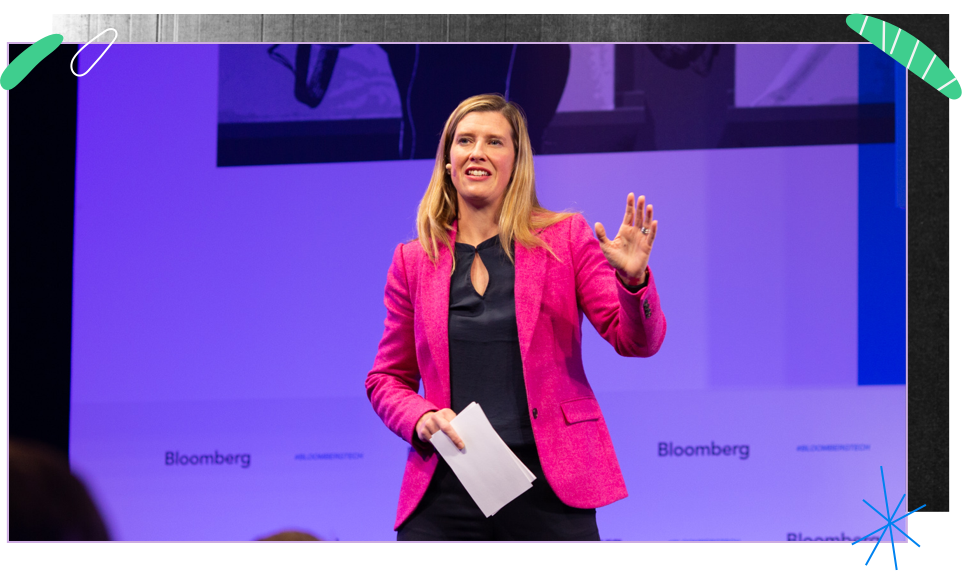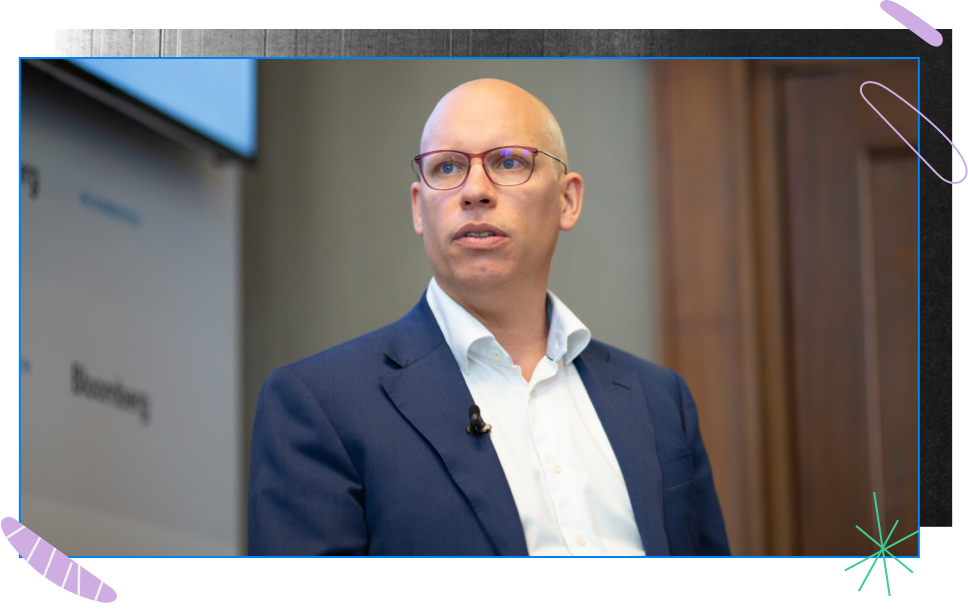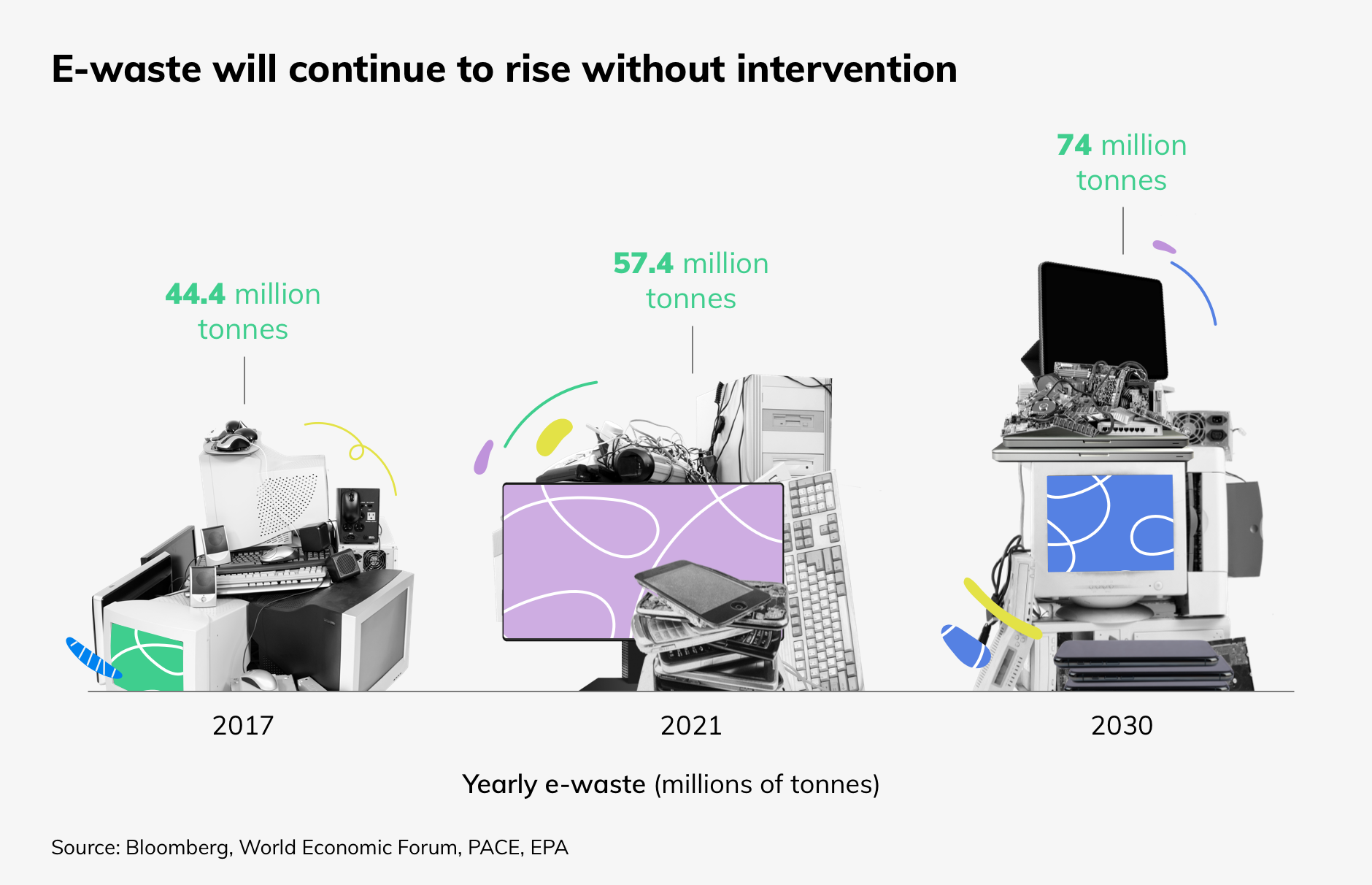How 5G Can Reduce a Company’s Carbon Footprint
At the Bloomberg Technology Summit, industry leaders showed how connectivity can help carbon-intensive industries become more sustainable.
Each new wireless generation offers benefits and opportunities for both consumers and businesses, thanks to higher speed, better coverage and greater capacity to power innovative new applications.
But past leaps into heightened connectivity have increased energy use, and rolling out a cellular network upgrade in the same way would only perpetuate the problem.
5G has now been deployed globally in over 200 networks. With the step up from 4G, Ericsson seeks to instill a mindset of “think differently” when it comes to sustainability, according to Katherine Ainley, Ericsson CEO of UK and Ireland.
In September, Ainley told attendees at the Bloomberg Technology Summit in London that while every new generation of mobile technology has traditionally increased energy usage, that curve could be flattened with a holistic approach for the 5G rollout. The key is to plan, deploy and run mobile networks sustainably.“We’re working to break the energy curve. If we embrace connectivity and all the benefits that come with it, we can have a disproportionate impact on the world around us.”

Globally, mobile networks have a relatively low impact on electricity use and greenhouse gas emissions. However, energy use is one of the biggest challenges within the overall mobile technology industry. The global pattern of energy-use increases that have followed upgrades from 2G to 3G and from 3G to 4G could carry on interminably, Ainley said, unless business leaders challenge the business-as-usual approach.
Ainley drew a distinction between the consumer-centricity of 4G—which ushered in the on-demand era of ride-sharing and food delivery apps—and the enterprise-boosting advantages of 5G. This vision is already materializing as manufacturing plants benefit from connected robots; sensor-equipped smart devices that reduce ports’ fuel consumption and greenhouse gas emissions; and automatically guided vehicles. 5G is also enabling the push of nearly every industry into the frontiers of virtual reality.
The 5G New Radio standard—which refers to the new radio interface and radio technology for cellular networks—also allows for power-saving that LTE could not. Today, a large portion of energy consumption in mobile networks comes from radio base station sites, which transmit data. The energy usage is consistent, even though the actual network traffic rises and falls during the day—meaning these stations are expending the same amount of energy whether they’re actively transmitting or idle. Because 5G can allow longer gaps in transmission than LTE can, it requires less always-on signaling, and offers significantly improved support for energy savings during low-to-medium network traffic times.

The role of digitalization in climate action
Breaking the energy curve of mobile network consumption is a priority focus for Ainley and was top of mind at the recent Bloomberg Technology Summit, speaking to the industry imperative of deploying and running 5G networks sustainably. As that 5G-enabled future comes to fruition, improved connectivity will unlock opportunities for decarbonization across sectors.
The information and communications technology (ICT) sector is responsible for 1.4% of global greenhouse gas emissions, but it holds the potential to help other industries reduce emissions by 15% by 2030, according to a recent Ericsson report.
A portion of those reductions will be accomplished by replacing some long-distance business travel with virtual reality collaborations. For example, Hyperbat, the UK’s largest independent vehicle battery manufacturer, connects geographically dispersed teams using augmented and virtual reality, thanks to high-performing graphics processors at the edge of Ericsson’s 5G network that stream immersive virtual environments to headsets in multiple locations. This allows workers to virtually interact with 3D objects in real time and explore 3D engineering blueprints.
Ericsson uses similar modeling to limit the number of trips into the field that repair workers must make for hardware fixes. The company has begun sending drones to scan its 5G cell tower masts so that digital twins can be used for off-site preventive maintenance.
How small changes can make a big impact for energy-intensive industries
The idea that 5G and connectivity could reduce a company’s carbon footprint is gaining momentum. In a recent Ericsson survey conducted by Bloomberg, 40% of IT professionals agreed that cellular connectivity can be used to reduce energy consumption while increasing agility within their businesses. Those who were surveyed work in sectors responsible for a large share of the world’s greenhouse gas emissions: the manufacturing, energy and utilities, shipping and automotive industries.

Peter Vincent, Head of Connected Systems for truck maker Scania, shares that belief. Joining Ainley for a cross-sector summit panel, Vincent described a future where the company’s connected fleets—which are increasingly going electric—operate autonomously overnight, so that in addition to reducing emissions, they also reduce daytime traffic and create more pedestrian-friendly spaces.
Such pilot projects generate data that shipping companies can use to build the business case for further pushes into renewable energy sources.

5G and the emissions-reduction multiplier effect
Vincent observed that, given the demands of today’s automated manufacturing processes, Scania currently employs more software engineers than hardware engineers—a common refrain as traditional manufacturing, energy and shipping companies transform themselves into technology companies.

Sandeep Raithatha, Head of Strategy, Innovation & 5G IoT at UK-based telecom provider Virgin Media O2 Business, also expressed a de-emphasis on new hardware. Raithatha said Virgin Media O2 is working through its supply chain to make it easier for customers to opt for recycled handsets and smartphones, rather than brand-new models.

Such options are critical, not least because electronic waste often contains precious metals; recovering these metals reduces the need to mine for more, which would emit additional greenhouse gases. In the transition to 5G, and amid the resulting proliferation of smart devices, it’s important for businesses to optimize to reduce waste, and to lean into innovations that reduce dependency on hardware—like a 5G-enabled shift to a wireless power grid.

Ainley expressed her hope that the innovative efforts discussed at the Bloomberg Technology Summit come to life across key sectors such as manufacturing, energy and transportation, where new sustainability efforts can make the biggest impact. She shared that, while technology already holds the potential to reduce emissions in those sectors by 15%, that figure grows to 20% when the potential of 5G is factored in, according to recent Ericsson research in Europe.
“To put that into context,” she said, “that’s like removing slightly more than the 33 million cars that are in the UK. It’s just a massive, massive difference you can make.”
For enterprises, connectivity is king, and as 5G’s foothold strengthens, it offers the potential to usher in a greener era as businesses take advantage of its benefits.
